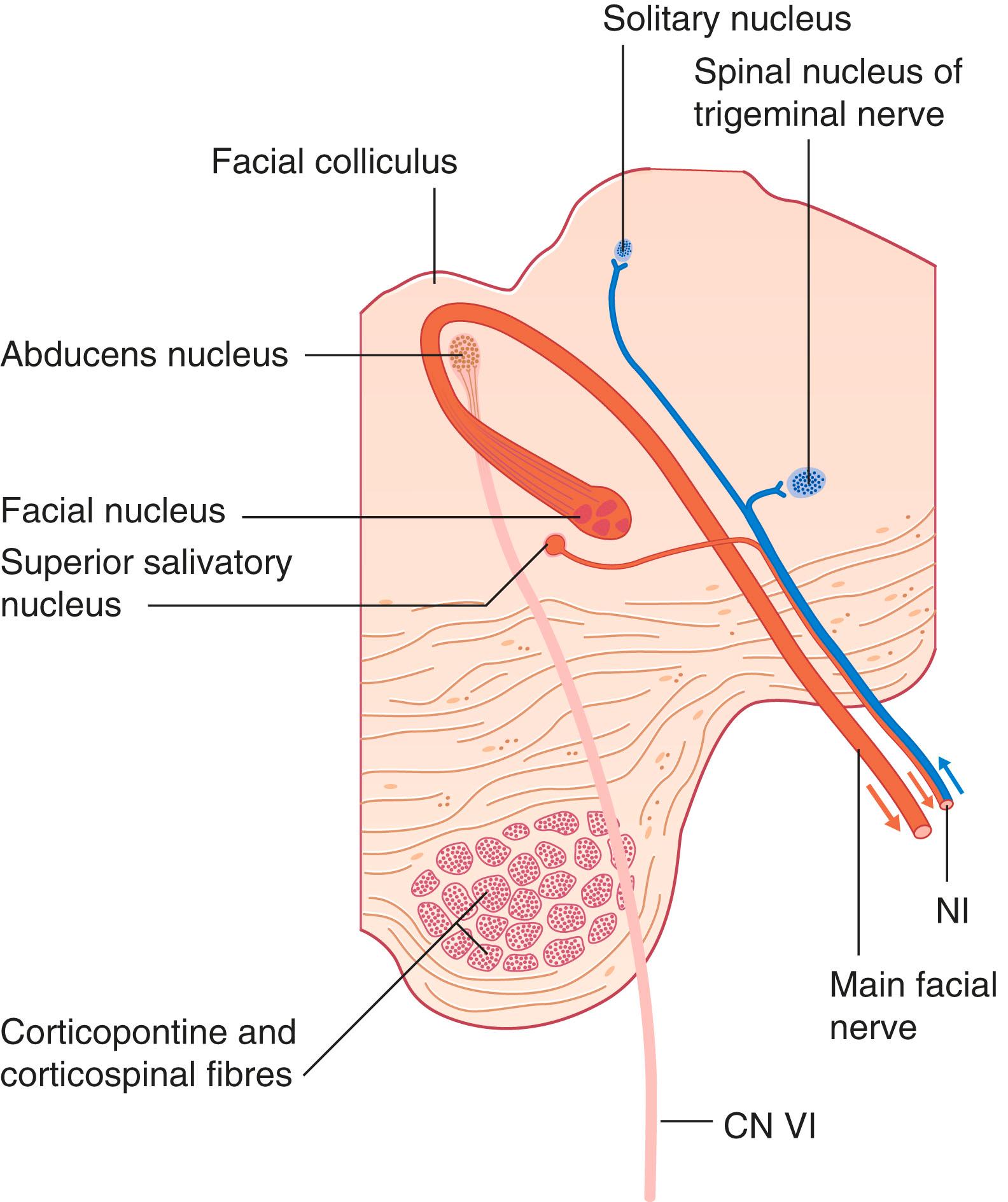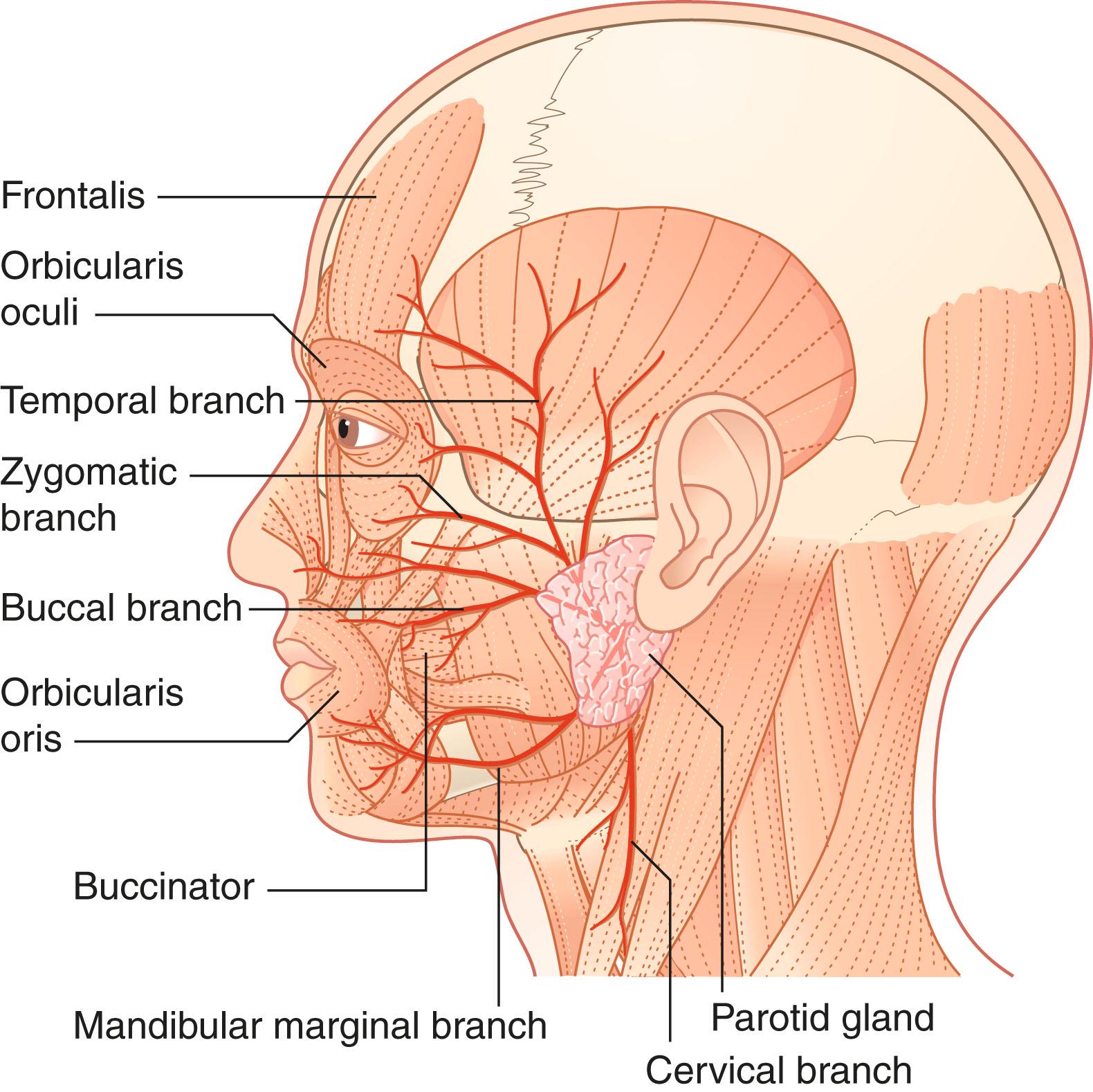Physical Address
304 North Cardinal St.
Dorchester Center, MA 02124
Cranial nerve CN VII is the most commonly paralysed of all peripheral nerves, owing to the great length of its canal in the temporal bone, where it is at risk of compression when inflamed. Since CN VII supplies the muscles of facial expression, the effects of peripheral facial nerve paralysis are obvious to all.
Learn the distinctions between upper and lower motor neuron lesions of CN VII.
Note that CN VII participates in several important reflex arcs.
The facial nerve supplies the muscles derived from the second branchial arch. These include the muscles of facial expression and four others mentioned below. It is accompanied during part of its course by the nervus intermedius , which is the sensory and parasympathetic component of the facial nerve. The nervus intermedius supplies secretomotor fibres to lacrimal glands in the eyes, nose, and mouth, and carries gustatory fibres from the tongue and palate.
The facial nerve arises from the branchial (special visceral) efferent cell column caudal to the motor nucleus of the trigeminal nerve (see Fig. 17.2 ). The facial nucleus occupies the lateral region of the tegmentum in the caudal part of the pons ( Fig. 22.1 and see Fig. 17.15 ). Before emerging from the brainstem, it loops, as the internal genu , around the abducens nucleus, creating the facial colliculus in the floor of the fourth ventricle.

The nerve emerges at the lower border of the pons at the pontomedullary junction together with the nervus intermedius. Both nerves cross the subarachnoid space in company with the vestibulocochlear nerve, to the internal acoustic meatus. Above the vestibule of the labyrinth, it enters a 7-shaped bony canal having a backward bend at the external genu of the facial nerve. Prior to emerging from the facial canal at the stylomastoid foramen, it supplies the stapedius muscle. As the facial nerve leaves the stylomastoid foramen, it supplies the posterior belly of the occipitofrontalis, the stylohyoid, and the posterior belly of the digastric. It then turns forward within the substance of the parotid gland while dividing into the five named branches to the muscles of facial expression ( Fig. 22.2 ).

All of the cell bodies of the motor nucleus receive a corticonuclear supply from the ‘face’ area of the contralateral motor cortex. In addition, those to the muscles of the upper face (occipitofrontalis and orbicularis oculi) receive a bilateral supply from the ipsilateral motor cortex as well. The bilateral supply for the upper facial muscles is reflected in their habitual paired activities in wrinkling the forehead, blinking, and squeezing the eyes closed. The muscles around the mouth, on the other hand, are often activated unilaterally for some expressive purpose. The partial bilateral supply to the facial muscles helps to distinguish a supranuclear from a nuclear or infranuclear lesion of the nerve ( Clinical Panel 22.1 ).
Become a Clinical Tree membership for Full access and enjoy Unlimited articles
If you are a member. Log in here